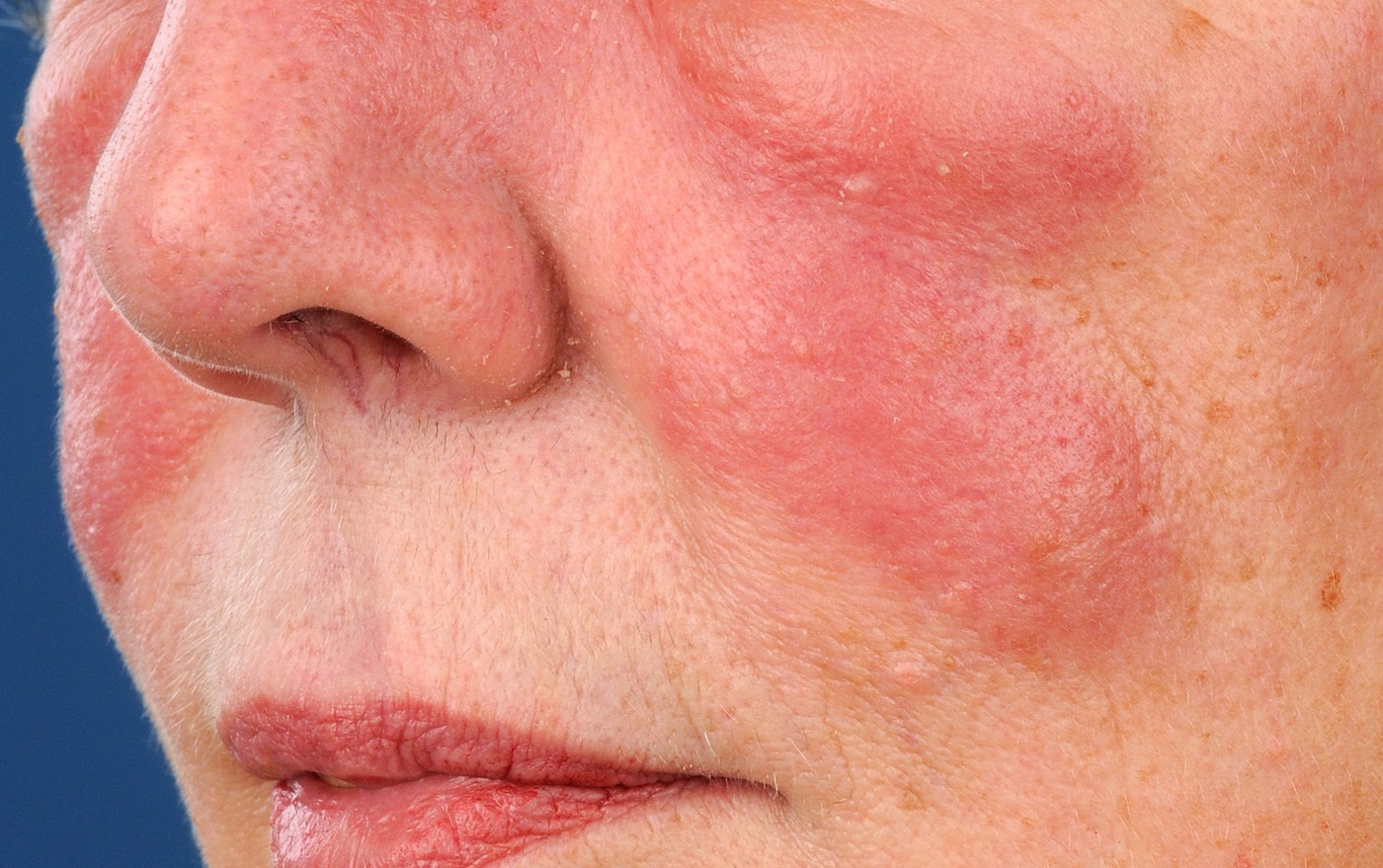Erysipelas: How to recognize it and treat it correctly
Erysipelas is a bacterial infection of the skin. The bacteria enter the body through small skin injuries and spread quickly.

Erysipelas, medically known as erysipelas, is a non-purulent, feverish bacterial infection of the skin.
The inflammation is usually caused by the pathogen Streptococcus pyogenes. The bacteria enter the body through small skin injuries and spread quickly. While a healthy immune system fights off the bacteria, the risk of erysipelas increases in immunocompromised people.
What is erysipelas?
If the immune system is healthy and the skin barrier is intact, the body has no problem fighting off the erysipelas pathogens. However, the risk of erysipelas increases in immunocompromised people. The bacterial infection of the skin is usually caused by the bacterium Streptococcus pyogenes, less often by staphylococci. The pathogen usually enters the body through small skin injuries, such as:
- Insect bites
- Eczema
- Dry skin patches on hands and feet
- Athlete’s foot
- Abrasions
- Chronic wounds
There it spreads via skin vessels, fat and connective tissue, and the lymphatic system.
Erysipelas – who is affected?
Both men and women are affected. The average age of onset of the disease is around 50 years. In 80 percent of cases, erysipelas appears on the extremities, particularly on the lower legs and feet. A pre-existing lymphatic drainage disorder is usually involved in the development of erysipelas. People with diabetes, obesity, lymphatic drainage disorders, circulatory disorders, venous insufficiency, and people who have previously had erysipelas have an increased risk of developing erysipelas.
Erysipelas symptoms: How to recognize erysipelas
It can take a few hours to several days for the first erysipelas symptoms to appear after an infection. Fatigue, fever, chills and pain in the affected skin area are among the first warning signs that the body is fighting an inflammation.
Swelling (edema) and itchy redness appear shortly afterwards. The affected skin area feels hot. The skin is uncomfortably tight and has a slight sheen. Another symptom of erysipelas is painful swollen lymph nodes in the area of the infection. In severe cases of erysipelas, blisters form on the skin and bleeding occurs. It is also possible that skin tissue dies (necrosis).
The doctor can usually tell whether it is erysipelas by the appearance of the skin. A blood test and a skin sample confirm the diagnosis: If the number of white blood cells is increased, this indicates inflammation. A skin sample is also tested for streptococci.
Treating erysipelas: This helps
People with erysipelas have to take antibiotics for ten days – either in tablet form or as an infusion via the vein. If the infection recurs (relapse), up to 20 days are necessary. In addition, the affected areas of skin must be elevated and immobilized. The aim of the high-dose antibiotics is to kill the bacteria and stop them from spreading. Cooling compresses, pain-relieving medication, fever reducers and anti-inflammatory measures complement the treatment of erysipelas.
Another important part of erysipelas treatment is to find the skin injury through which the erysipelas pathogens have penetrated. This must be treated with antiseptics and appropriate skin hygiene and care, among other things, in order to prevent a new erysipelas infection. If the original skin injury is not found and treated, erysipelas can break out again.
Risks of erysipelas: Complications of erysipelas
In the case of uncomplicated erysipelas, treatment can be carried out on an outpatient basis. In severe cases or in the event of complications, those affected must be admitted to hospital.
Complications are possible if treatment is given too late, if the bacteria have infected large areas of skin or if the immune system is severely weakened. Life-threatening complications are rare but possible.
The possible consequences of erysipelas include, in addition to a deterioration of the skin condition, the following:
- Blood poisoning (sepsis)
- Heart valve inflammation (endocarditis)
- Heart muscle inflammation (myocarditis)
- Meningitis
- Chronic lymphedema
Signs of a serious course of the disease, which requires an immediate call to the emergency medical service, are:
- Severe pain
- Fever
- Sweating
- Paleness
- Nausea
- Fast breathing and even heart palpitations
- Impaired consciousness (dizziness or confusion)
In order to avoid complications and serious health consequences, a doctor should be consulted as soon as possible.

